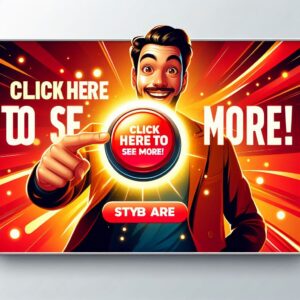How to Design Custom Products That People Want

Looking for more amazing products? Check out our online store and explore our collection here! Happy shopping!
Before diving in, please note: This post is for informational purposes only. If you’d like to know more about how we approach topics, feel free to check out our friendly Disclaimer Page.
Hey there, amazing readers! 
We’re committed to delivering quality posts, and your support (even just sticking around despite the ads) means everything to us. So, bear with us, and thanks for helping us keep the good vibes rolling. Now, on to the fun stuff!
TRANSLATE BUTTON AT THE END OF THE ARTICLE
A Quick Overview
In a world bursting with options, the quest to create custom products that resonate with people has never been more vital.
We all have preferences, quirks, and desires that guide our purchasing choices.
So, how can you tap into these personal inclinations and craft items that truly hit home?
The key lies in understanding your audience, brainstorming creatively, staying updated on trends, and refining your designs through feedback.
In this article, I’ll share valuable insights that will empower you to design custom products that people genuinely desire.
Let’s dive in!
Understanding Your Audience: The Key to Custom Design
Before you even sketch your ideas, it’s essential to get to know who you’re designing for.
Who are your potential customers?
What makes them tick?
This isn’t just about demographics like age or gender; it’s deeper than that.
Think about their interests, habits, and pain points.
Conduct surveys or interviews to gather firsthand information.
Ask questions like:
What do they value in a product?
What problems do they face that your product could solve?
How do they prefer to shop—online, in stores, or both?
Even social media can offer a goldmine of information.
Dive into discussions, comments, and shares.
Pay attention to what excites or frustrates people.
Storytelling can also play a vital role in connecting with your audience.
Share relatable stories that resonate with their experiences.
This builds trust and loyalty, making them more likely to support your products.
Remember, different people have different needs.
A one-size-fits-all approach often falls flat.
Instead, consider creating buyer personas to visualize your target customers.
Each persona should encapsulate motivations, challenges, and preferences.
This will be your guiding star as you design your products.
Brainstorming Ideas: Unleash Your Creative Potential
With a solid understanding of your audience, it’s time to let your imagination run wild.
Brainstorming is where the magic happens.
Set aside a dedicated time for this creative exercise.
Grab a whiteboard, sticky notes, or a notebook—whatever sparks your creativity.
Invite other creative minds to join you.
Sometimes, bouncing ideas off others can lead to unexpected breakthroughs.
Don’t censor ideas at this stage; jot down everything, no matter how wild it seems.
Consider using techniques like mind mapping.
Start with a central theme or problem and branch out into various ideas and solutions.
You can also explore the SCAMPER method:
Substitute
Combine
Adapt
Modify
Put to another use
Eliminate
Reverse
These prompts can help you think outside the box.
Another fun approach is to create a mood board.
Collect images, colors, and textures that inspire you.
This visual collage can help you align your ideas and spark new ones.
Remember, creativity is a process.
Don’t be discouraged if your first ideas don’t seem perfect.
Keep refining them until they resonate with your audience.
Research Trends: What’s Hot and What’s Not Right Now
Trends play a critical role in product design.
They inform what people are currently interested in and can guide you toward creating something that feels fresh and relevant.
Start by exploring industry reports, blogs, and social media platforms.
Pinterest and Instagram are fantastic for spotting emerging trends in real-time.
Pay attention to what influencers and thought leaders are talking about.
Tools like Google Trends can also provide data on what people are actively searching for.
This can help you identify gaps in the market that your custom products can fill.
Don’t forget about seasonal trends.
For instance, summer usually brings a rush for outdoor products, while winter leans toward cozy items.
Aligning your designs with these trends can increase their appeal.
Additionally, consider the cultural climate.
Are there current social movements or conversations that your product could engage with?
For example, sustainability is a hot topic.
If your custom products align with eco-friendly practices, they could garner more attention.
Lastly, don’t just follow trends blindly.
Ensure your designs reflect your brand’s values and voice.
Authenticity resonates with audiences more than fleeting fads.
Prototyping: Turning Ideas into Tangible Products
Once you have a clear concept, it’s time to bring your ideas to life through prototyping.
This step is crucial in evaluating how your designs will function and be perceived.
Start with low-fidelity prototypes.
These can be simple sketches or digital mockups.
They don’t need to be perfect; they just need to convey your idea.
Next, consider creating a physical prototype.
Depending on your product, you might use materials like cardboard, 3D printing, or even clay.
This helps you visualize size, shape, and functionality.
Testing your prototypes is vital.
Use them yourself and share them with trusted friends or family for feedback.
Observe their reactions and gather their thoughts.
Iterate based on the feedback received.
Prototyping is about refining your design.
Sometimes, you might discover that certain features don’t work as intended or could be improved.
Don’t hesitate to go back to the drawing board.
The best products often come from cycles of failure and improvement.
Finally, document the process.
Keeping track of what worked and what didn’t can guide future projects.
Feedback Loop: Engaging Customers for Valuable Insights
Engaging your audience is crucial for refining your products.
Once you have a prototype, it’s time to gather feedback.
This process should be ongoing, not just a one-time event.
You can use surveys, focus groups, or social media polls to solicit opinions.
Ask open-ended questions to get more nuanced responses.
Consider creating a beta program where a small group of customers can test your product before the official launch.
This gives them a sense of ownership and investment in your brand.
Encourage honest feedback.
Let them know that you truly want to improve, and their comments matter.
Listen actively.
Sometimes, feedback can be tough to digest, but it’s essential for growth.
Keep your customers updated about changes stemming from their feedback.
This not only shows that you value their input but also builds community and trust.
Remember, feedback isn’t just useful during the design phase.
Continue to seek it even after your product launches.
Fine-Tuning Designs: The Art of Iteration and Improvement
Once you gather feedback, the fun continues with fine-tuning your designs.
This is where you polish your product to perfection.
Review all the input you received.
What were common themes?
Did users love or dislike specific features?
Start by prioritizing changes.
Not every piece of feedback needs to be acted upon immediately.
Focus on what adds the most value to your customers.
Use tools like A/B testing to compare variations of your design.
This allows you to make informed decisions based on data rather than guesswork.
Keep iterating.
Sometimes it takes several rounds of revisions to get things just right.
The goal is to create a product that not only meets expectations but also exceeds them.
Stay agile.
The market is always shifting, and so are customer preferences.
Keep your designs flexible enough to adapt to new insights and trends.
Don’t forget to celebrate your progress, no matter how small.
Each iteration is a step closer to your final product.
Marketing Your Custom Products: Strategies for Success
With a polished product in hand, it’s time to shout about it from the rooftops!
Marketing is essential to ensure your audience knows about your custom creations.
Start by defining your brand message.
What makes your product special?
How does it solve a problem or enhance someone’s life?
Utilize social media.
Platforms like Instagram and Facebook are fantastic for showcasing visuals of your products.
Share behind-the-scenes content to connect with your audience personally.
Consider influencer partnerships.
Collaborating with individuals who align with your brand can expand your reach.
They can introduce your products to their followers, creating buzz and credibility.
Email marketing can also be effective.
Build an email list and send updates about your launch, special offers, and exciting content related to your products.
Don’t shy away from running promotions or contests.
These can create excitement and encourage sharing among potential customers.
Lastly, invest in SEO.
Ensuring your products are easily discoverable online will drive organic traffic to your site.
Launch Day: Making a Splash with Your New Creations!
Finally, the big day arrives!
Launching your custom products is exhilarating, and you want to make a splash.
Consider creating a countdown campaign leading up to the launch.
Build anticipation and excitement.
On launch day, host a live event or an online reveal.
Engage with your audience in real-time, share the story behind your product, and answer questions.
Leverage all the marketing channels you’ve prepared.
Post announcements, stories, and engaging content across social media and your website.
Encourage your followers to share their thoughts and experiences with your product.
User-generated content can amplify your reach and authenticity.
As sales start rolling in, keep the momentum going.
Follow up with customers, thank them for their support, and encourage reviews.
Remember, a product launch is just the beginning.
Maintain the connection with your audience, continue gathering feedback, and keep innovating.
Conclusion
Designing custom products people want can feel overwhelming, but it’s a journey worth taking.
By understanding your audience, brainstorming creatively, researching trends, and staying open to feedback, you can craft products that resonate deeply.
Remember, it’s a process of iteration and improvement, so keep refining your designs until they shine.
And when launch day arrives, celebrate it like a victory!
I hope these insights guide you on your path to creating products that not only meet a need but also ignite passion and excitement in your customers.
Let’s make some magic happen!

The Enlightenment Journey is a remarkable collection of writings authored by a distinguished group of experts in the fields of spirituality, new age, and esoteric knowledge.
This anthology features a diverse assembly of well-experienced authors who bring their profound insights and credible perspectives to the forefront.
Each contributor possesses a wealth of knowledge and wisdom, making them authorities in their respective domains.
Together, they offer readers a transformative journey into the realms of spiritual growth, self-discovery, and esoteric enlightenment.
The Enlightenment Journey is a testament to the collective expertise of these luminaries, providing readers with a rich tapestry of ideas and information to illuminate their spiritual path.
Our Diverse Expertise
While our primary focus is on spirituality and esotericism, we are equally passionate about exploring a wide range of other topics and niches 

To ensure we provide the most accurate and valuable insights, we collaborate with trusted experts in their respective domains 
Our blog originally focused on spirituality and metaphysics, but we’ve since expanded to cover a wide range of niches. Don’t worry—we continue to publish a lot of articles on spirituality! Frequently visit our blog to explore our diverse content and stay tuned for more insightful reads.
Hey there, amazing reader! 
Check out our store here and take a peek at some of our featured products below! Thanks for being awesome!











